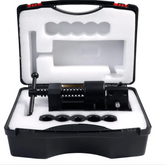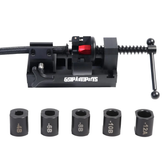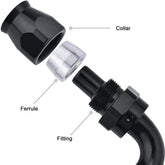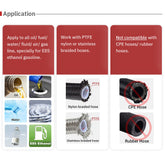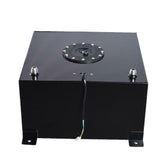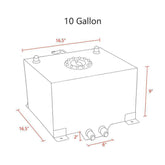Fuel injectors are an important part of a vehicle's fuel delivery system. They are responsible for spraying atomized fuel into the engine's cylinders so that it can ignite and power the engine. Over time, fuel injectors can become clogged or worn out, causing driveability issues like poor acceleration, rough idle, decreased fuel economy, and failed emissions tests. Replacing faulty fuel injectors can often resolve these problems and restore engine performance. This guide will walk through the steps for inspecting fuel injectors and replacing them if needed.
Inspecting Fuel Injectors
The first step is to inspect the fuel injectors to determine if replacement is necessary. Here is the process:
Remove air filter assembly - The air filter housing will need to be removed to access the fuel injectors. Consult the vehicle repair manual for the proper procedure.
Check electrical connectors - Unplug the electrical connector at each injector one at a time. Make sure the connectors are clean and secured properly. Faulty connections can cause injector issues.
Perform visual inspection - Look for signs of external leaking, damaged or corroded terminals, and cracked or damaged bodies. Leaking injectors must be replaced.
Check injector resistance - Use a digital multimeter to test the resistance across the injector terminals. Consult manufacturer specs for required ohms reading. Injectors out of spec could indicate a problem.
Perform leak down test - Specialized tools can check for internal injector leaks. Leaking injectors cause poor engine performance.
If testing indicates faulty injectors, replacement is required. If injectors pass inspection, the problem lies elsewhere.
Replacing Fuel Injectors
Once bad injectors are identified, here are the steps for replacement:
Relieve fuel system pressure - Locate the Schrader valve on the fuel rail and release pressure before disconnecting injector electrical connectors or fuel lines.
Remove air intake components - Air hoses, tubes, and the air filter housing will need to be removed to access the fuel rails.
Disconnect electrical connector - Unplug the electrical connector at each injector. Make sure to note the location of each.
Remove fuel rail - The fuel rail provides fuel to each injector and is held in place by several bolts. Loosen bolts and remove rail.
Remove injectors - There may be retaining clips holding injectors to the fuel rail. Carefully remove clips and lift out old injectors.
Install new injectors - Lubricate new injector o-rings with clean engine oil and carefully press into fuel rail sockets until fully seated.
Reinstall fuel rail - Reverse removal steps to reinstall fuel rail and mounting bolts. Torque bolts to manufacturer specs.
Reconnect electrical connectors - Plug in the injector electrical connectors, making sure to match locations. Listen for an audible click.
Reinstall air intake components - Replace all air hoses, tubes, housing, and air filter removed earlier.
Restart engine - Crank the engine and check for leaks at injectors and fuel rail. Top up fuel if needed.
Following proper injector replacement procedures and manufacturer torque specs is crucial. Injectors are a precision fuel delivery component and improper installation can negatively affect performance and cause leaks. Thoroughly inspect work to ensure proper injector operation.
Conclusion
Bad fuel injectors can cause all sorts of driveability and performance issues. Checking and replacing them regularly is key to keeping an engine running properly. While injector replacement is not terribly complicated, it does require special tools and knowledge. Consult your vehicle repair manual for the proper procedures specific to your vehicle. Take care when working with fuel system components to avoid damage, leaks or injury.

